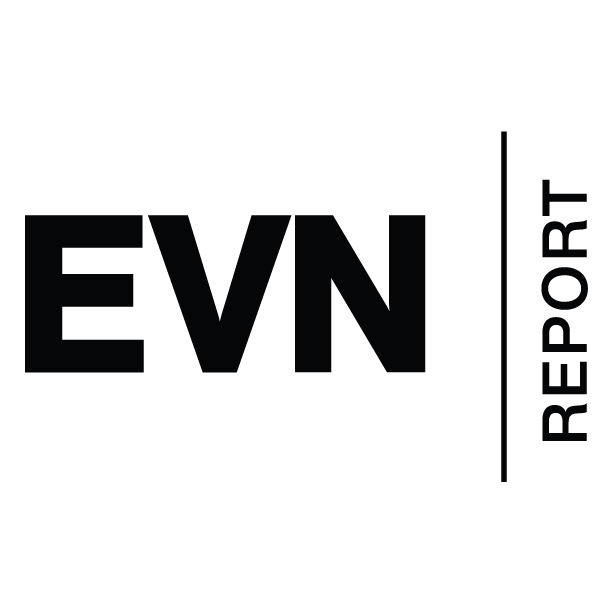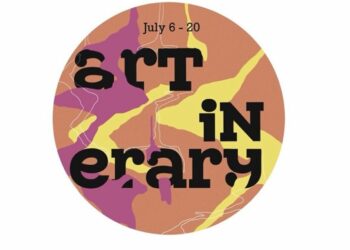
Listen to the article
While researching the situation of human rights in Armenia, I visited the rural area of Aygedzor in Tavush. What I encountered was shocking: the deplorable condition of the school’s sanitation facilities. The bathrooms were in dire condition, lacking doors, overrun by mold, and dirtied floors. Additionally, the squatting toilets had no running water. I came across a seven-year-old boy using water from a large blue barrel to wash his hands, a scene that highlighted the potential for infections and diseases.
After witnessing this, I focused my research on the critical issue of water and sanitation in Armenian schools. The findings were alarming and revealed systemic issues that went beyond just infrastructure deficiencies. These problems impacted health, educational equality, rights and inclusivity, security and privacy. The sanitation crisis in Armenian schools demands urgent attention and comprehensive solutions.
Health Impact
A 2019 ad hoc report by former Human Rights Defender Arman Tatoyan highlighted significant shortcomings in water and sanitation infrastructure across Armenian schools. The study, based on visits to 201 educational institutions (121 schools and 80 kindergartens) in Yerevan and various regions, found that 86% of schools and 56% of kindergartens lacked hot water. Many schools had outdoor sanitary facilities without soap, and 76% lacked toilet paper, hand dryers, or towels. The worst conditions were observed in rural schools in the regions of Shirak and Vayots Dzor, which resulted in frequent outbreaks of infectious diseases. According to Tatoyan’s report, many pupils avoid using the toilet because of bad sanitary conditions. This highlights the urgent need for improved infrastructure to support students’ basic health and educational rights. Avoiding the use of the toilet for extended periods can lead to various health issues, including digestive and urinary conditions like Crohn’s disease, inflammatory bowel disease, and urinary incontinence. It can also increase the risk of kidney stones and urinary tract infections, and contribute to dehydration and reduced productivity due to insufficient water intake.
A joint 2022 report by UNICEF and WHO confirmed that over 12,500 students and 1,580 teachers in 135 public schools in Armenia lack sewage systems. Many also face challenges in accessing water for drinking and handwashing. These deficiencies contribute to outbreaks of gastrointestinal infections, respiratory diseases, and skin conditions, affecting students’ health and academic performance.
Rights and Inclusivity
Providing appropriate facilities for children with disabilities is essential in upholding their right to education and fostering inclusivity and diversity in schools. The 2019 ad hoc report revealed that only eight out of 121 schools and two out of 80 kindergartens had facilities for the disabled. This significant lack of accessible infrastructure hinders their learning experience and marginalizes them, preventing full integration into the school community.
Inclusive education is a basic human right, and schools must be prepared to accommodate students with disabilities. This involves providing accessible toilets, ramps, and other facilities that allow them to navigate the school environment independently. When schools are inclusive, students with disabilities can learn alongside their peers, fostering mutual understanding and respect.
The lack of inclusive facilities perpetuates exclusion and discrimination. Children with disabilities often miss out on educational opportunities, denying them the chance to reach their full potential. This violation of their rights also deprives society of their valuable contributions.
The lack of appropriate hygiene facilities and the prevalence of squatting toilets pose significant challenges for girls, especially during menstruation. Tatoyan’s report found that in 41% of rural schools, only squatting toilets are available. This situation is particularly difficult for both disabled children and girls. Squatting toilets are often inaccessible to those with physical disabilities and are particularly challenging for girls during their period.
The absence of private, hygienic toilets dissuades girls from attending school during menstruation, resulting in higher dropout rates and poorer academic performance. Inadequate facilities may compel girls to miss school, thereby falling behind in their studies.
Addressing these issues is crucial for achieving gender equality in education. Schools must provide safe, private and hygienic facilities to ensure regular school attendance and full participation in the educational process. By investing in inclusive and gender-sensitive infrastructure, Armenia can establish a more equitable education system that supports the health, dignity, and academic success of all students.
Security and Privacy
The absence of privacy partitions in bathrooms poses a significant security risk and compromises students’ privacy. Tatoyan’s report noted that, “numerous cases have been recorded when the toilet bowls in the toilets were not installed in separated toilet cubicles or were not separated by partitions.” This lack of privacy not only affects students’ dignity but can also lead to harassment, and abuse.
Privacy is a basic human need, and its absence in school bathrooms can profoundly affect students psychologically. The lack of partitions can lead to embarrassment and stress in children, impairing their concentration and participation in school activities. This can increase the risk of bullying and harassment, creating a hostile environment that undermines their sense of safety and well-being.
Improving the privacy and security of school bathrooms is essential for a supportive and respectful learning environment. Schools must ensure that all students, regardless of their age or gender, have access to safe and private facilities. Installing partitions and providing adequate supplies such as soap and toilet paper protect students’ privacy and promote their dignity and self-esteem. Hence, by improving bathroom facilities, schools can help prevent harassment, protect students’ privacy and support their overall development.
Impact of the Refugee Influx and Health Concerns
The influx of refugees, especially from Nagorno-Karabakh, has further exacerbated the existing water and sanitation issues in Armenian schools. A 2024 UNICEF report states that Armenia currently hosts 115,243 refugees, including around 36,000 children, who have fled due to the Azerbaijani takeover of Nagorno-Karabakh. This is in addition to the 26,700 people displaced from the 2020 Artsakh War, adding significant strain to the country’s infrastructure, particularly in schools.
Overcrowding in schools has increased the risk of infectious disease outbreaks. With more students sharing limited sanitation facilities, maintaining cleanliness and hygiene becomes more challenging. Lack of hot water and proper sanitation facilities hampers hygiene practices, making it difficult for students and staff to maintain cleanliness. This affects not only immediate health risks but also students attendance and academic performance.
Moreover, the influx of refugees has put a strain on local healthcare systems, complicating timely health issue management. Children exposed to unhygienic conditions at school may bring pathogens home, affecting their families and further burdening local healthcare providers. This creates a vicious cycle where poor health and absenteeism negatively impact educational outcomes and community well-being.
Resource Allocation and Funding Gaps
Addressing these challenges requires substantial resources and funding that are currently lacking. The UNICEF report highlights this critical funding gap. The Water, Sanitation and Hygiene (WASH) funds required a total of $750,000, but between 2023 and 2024, only $265,673 was received resulting in a 65% shortfall. This lack of funding severely limits the improvement and expansion of sanitation facilities needed to meet the growing demand.
The Armenian government, international organizations, and local communities must work together to bridge this funding gap and prioritize sanitation needs in schools. Without sufficient investment, the situation will likely deteriorate, leading to more frequent disease outbreaks and further hindering the educational experience for both local and refugee children.
Conclusion
The water and hygiene crisis in Armenian schools demands urgent attention, especially with the arrival of the refugee population from Nagorno-Karabakh. Addressing these challenges is essential to fulfilling the basic human rights of those children, as it creates healthier and more favorable learning environments. Advocacy for improved sanitation facilities promotes educational equality, upholds the rights of disabled individuals, and leads to a healthier student population.
A coordinated effort to enhance water and sanitation management in schools aligns with several Sustainable Development Goals, including Quality Education, Clean Water and Sanitation, and Reduced Inequalities. It also encourages a collective approach to sustainable development, ensuring that no one is left behind.
International support and funding are vital to addressing these infrastructure deficiencies. If obtained, Armenia can ensure a brighter and healthier future for its next generation, fostering an environment where all children can thrive and succeed.
Also see
The Forks on the Road to the Academic City
The proposed Academic City aspires to reform the higher education system and boost the quality and competitiveness of research in the country. However, the ambitious project has come under scrutiny not just for leaving the fate of existing universities and their buildings unclear, but also with respect to its conceptualization, planning as well as the cost and effectiveness of its realization.
Read moreRecently Published
EVN Security Report: June 2024
A cursory review of public discourse and limited research on Armenia's security environment reveals a “levels of analysis” problem. This month’s security report introduces Regional Security Complex Theory (RSCT) to alleviate this serious analytical shortcoming.
Read moreARTINERARY: July 6-20
The cultural high point of the year is definitely peaking in the next couple of weeks with the opening of the 21st Golden Apricot International Film Festival with its usual roster of must-see films and... uhum... controversial guests. Finding the gems, or maybe the guilty pleasures in this whirlwind of activities can be a challenge, so hopefully this guide can be of some help.
Read moreArchive-mine
An homage to the rich, yet overlooked history of Armenian editorial illustrations, the “Archive-mine” exhibition, curated by Shamiram Khachatryan & EVN Report and on display during the EVN Media Festival this year, revealed works published in more than a dozen different Armenian periodicals in the last century, from Cairo to Istanbul, London to Tehran, Tbilisi and Yerevan. They are a testament to not only the role of the media to hold up a mirror to its readers but of the media’s innate predisposition to witness and relay its own times.
Read more




